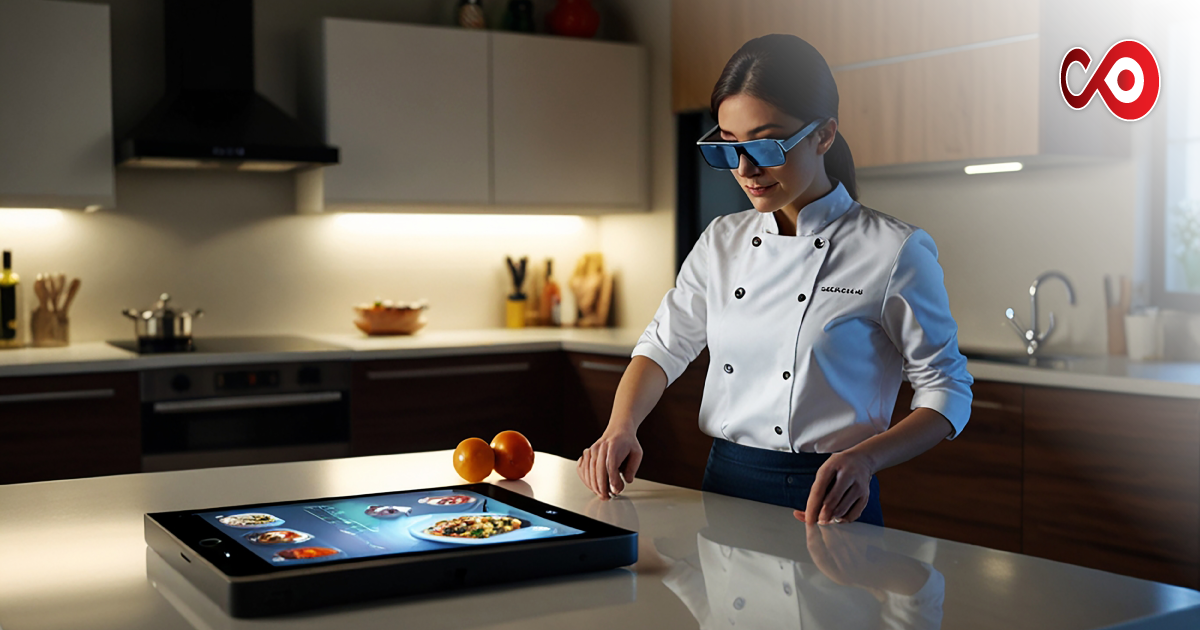In today’s fast-paced digital world, artificial intelligence (AI) and machine learning (ML) are changing the game in many industries, and restaurants are no exception. As a restaurant owner, using these technologies can give you a competitive edge, streamline your operations, and boost customer satisfaction. This article explores how AI and ML transform online restaurant operations and provides some handy insights on how to use these advancements.
Enhancing the Online Food Ordering System
Your online food ordering system is the heart of your restaurant’s digital presence. AI and ML can make this system smarter by personalising the customer experience. Machine learning algorithms can look at customer data to predict what they might like, suggest menu items, and provide tailored recommendations. This makes customers happy and can increase your sales.
Example: If customers often order vegetarian dishes such as Paneer Tikka Masala or Bombay Aloo, the system can highlight new vegetarian items or special deals when they visit your site. This makes the experience more engaging and satisfying for your customers.
Streamlining Menu Design and Printing
AI tools are changing how menus are designed and printed. These tools can analyse customer feedback, sales data, and current trends to create an optimised menu that features popular and profitable items. Using AI, you can ensure your menu design matches customer preferences and maximises revenue.
Additionally, AI can help with menu printing by predicting demand for seasonal items or limited-time offers. This means you print the right amount of menus, reducing waste and costs.
Example: An AI tool can analyse which dishes are most popular during certain seasons and suggest adjustments to your menu. If salads are in high demand during summer, the tool can recommend featuring them more prominently.
Innovating à la Carte Menu Design
Creating an à la carte menu that appeals to everyone can be tricky. AI and ML can help by analysing customer data to understand preferences and predict future trends. This insight lets you design a menu that caters to diverse tastes while focusing on high-margin items.
Moreover, machine learning can help identify which dish combinations are often ordered together. This information can be used to create appealing combos or set menus such as Sag Aloo with Basmati Rice, enhancing the dining experience and boosting sales.
Example: If data shows that customers often order a specific appetiser with a particular main course, you can create a combo deal featuring these items, making it more attractive for customers.
Optimising EPoS Systems
Electronic Point of Sale (EPoS) systems are vital for efficient restaurant operations. Integrating AI and ML into your EPoS system can provide real-time insights and automate various tasks, improving efficiency and accuracy. AI can analyse sales data to predict busy periods, helping you optimise staff schedules and inventory management.
Additionally, machine learning algorithms can detect patterns in transaction data to identify potential issues like employee theft or operational inefficiencies. This proactive approach helps you address problems before they escalate, ensuring smoother operations.
Example: An AI-powered EPOS system can alert you if it detects unusual sales patterns that might indicate fraud, allowing you to take immediate action.
Enhancing Customer Service with Chatbots
AI-powered chatbots are becoming increasingly popular in the restaurant industry. These chatbots can handle various customer service tasks, from answering frequently asked questions to taking orders and making reservations. By automating these tasks, chatbots free up your staff to focus on providing exceptional in-person service.
Chatbots can also provide personalised recommendations based on previous interactions with customers. This level of personalisation can significantly enhance the customer experience, making them feel valued and understood.
Example: A customer using your online food ordering platform can interact with a chatbot to ask about menu items, check allergen information, and place an order seamlessly. The chatbot can remember previous orders and suggest similar dishes, creating a more personalised experience.
Improving Inventory Management
Effective inventory management is crucial for any restaurant. AI and ML can streamline this process by predicting demand and optimising stock levels. Machine learning algorithms analyse historical sales data, current trends, and external factors such as weather or local events to forecast demand accurately.
This predictive capability helps you maintain optimal inventory levels, reducing waste and ensuring you have the right ingredients on hand to meet customer demand. Additionally, AI can alert you when stock levels are low or when items are nearing their expiration date, allowing for timely replenishment.
Example: If your restaurant experiences a surge in orders for a particular dish during weekends, an AI system can predict this trend and ensure you have sufficient stock to meet the increased demand, preventing stockouts and lost sales.
Enhancing Marketing Strategies
AI and ML can also revolutionise your restaurant’s marketing strategies. By analysing customer data, these technologies can identify target demographics, preferences, and purchasing behaviours. This insight allows you to create highly targeted marketing campaigns that resonate with your audience.
Moreover, AI can optimise your digital advertising efforts by predicting which ads will perform best and adjusting bids in real-time to maximise ROI. This ensures your marketing budget is spent efficiently, driving more traffic to your online ordering system and increasing sales.
Example: An AI-powered marketing tool can analyse data from your online food ordering system to identify which promotions are most effective. If a discount on a particular dish leads to increased orders, the tool can suggest running similar promotions in the future.
Leveraging AI for Customer Feedback
Collecting and analysing customer feedback is essential for continuous improvement. AI can streamline this process by analysing reviews, social media mentions, and survey responses to identify common themes and sentiments. This analysis provides valuable insights into what customers love about your restaurant and areas where improvements are needed.
By understanding customer feedback in real-time, you can make informed decisions to enhance the dining experience and address any issues promptly. AI can also help you identify loyal customers and reward them with personalised offers, fostering customer loyalty and retention.
Example: An AI tool can analyse online reviews to identify common praises and complaints. If multiple reviews mention slow service during peak hours, you can take steps to improve staffing levels during these times, ensuring a better experience for your customers.
Parting Thoughts
Integrating AI and machine learning into your restaurant operations offers numerous benefits, from enhancing the online food ordering system to optimising inventory management and marketing strategies. By leveraging these technologies, you can provide a more personalised and efficient experience for your customers, ultimately driving growth and success for your restaurant.
As you explore the potential of AI and ML, remember to stay informed about the latest trends and advancements in these fields. Continuously adapting and innovating will ensure your restaurant remains competitive in the ever-evolving digital landscape.
By embracing AI and machine learning, you can transform your restaurant operations, offering a seamless and satisfying experience for your customers while streamlining processes and maximising profitability. The future of restaurant management is here, and it’s powered by AI.





